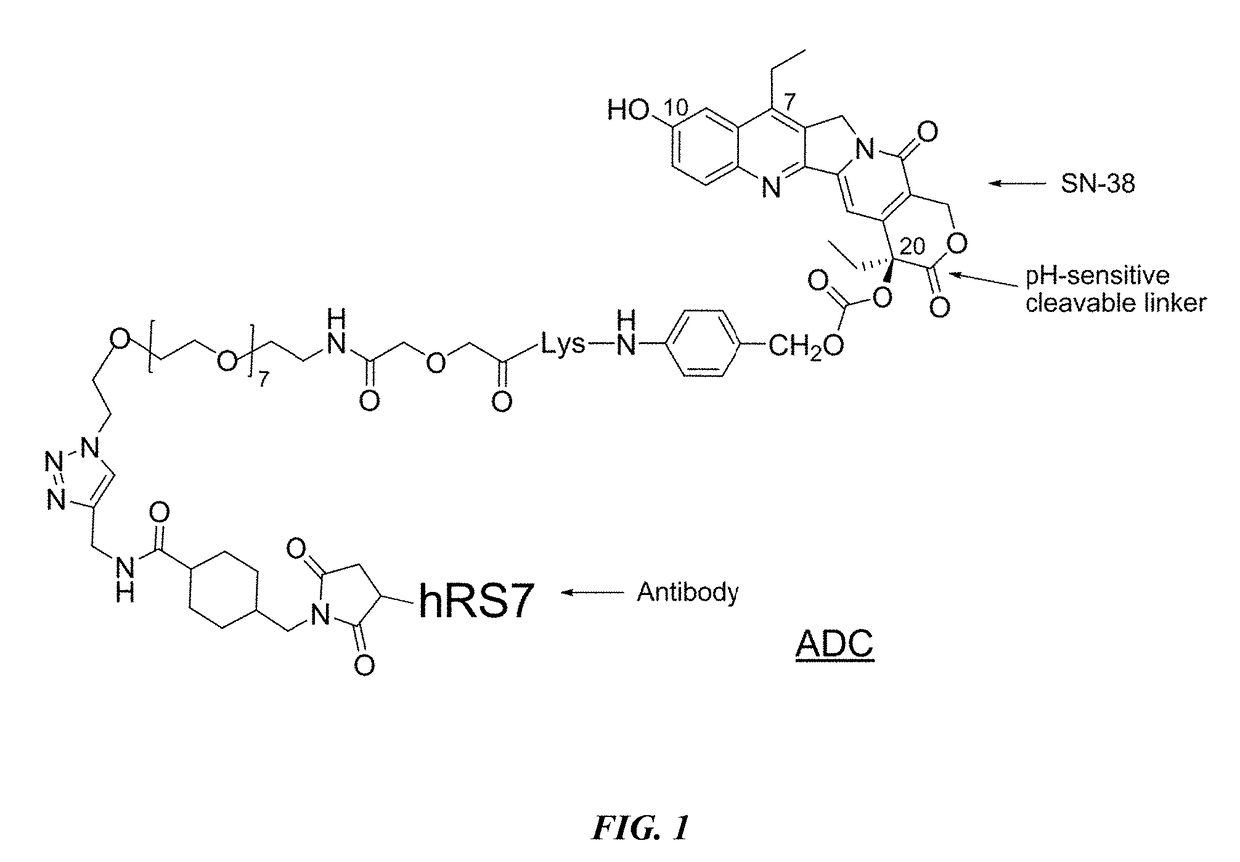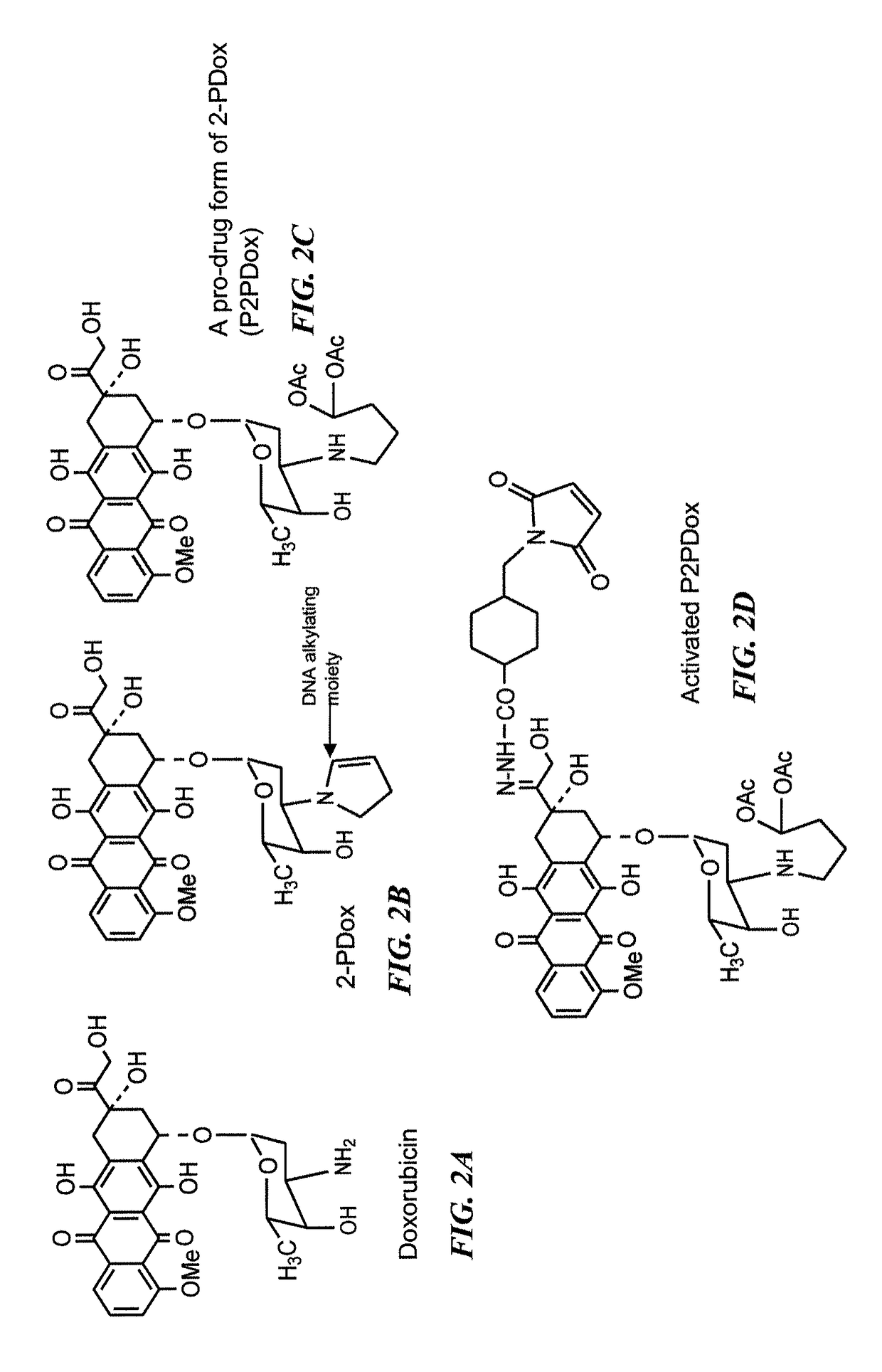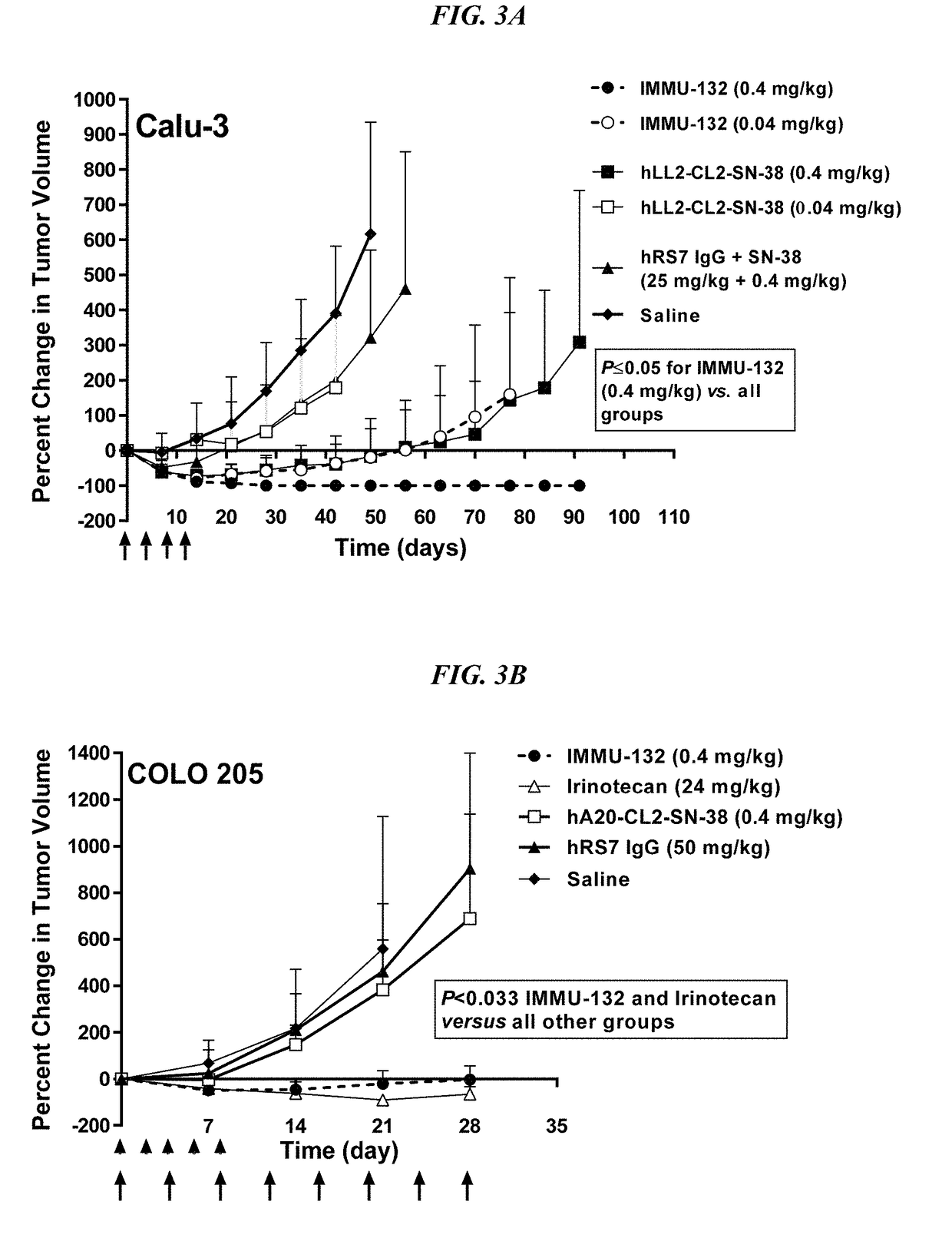Neoadjuvant use of antibody-drug conjugates
a technology of antibody-drug conjugate and neoadjuvant therapy, which is applied in the direction of antineoplastic agents, organic active ingredients, drug compositions, etc., can solve the problems of reducing immunogenicity, achieve the effect of overcoming tumors, improving targeting, and reducing side effects
- Summary
- Abstract
- Description
- Claims
- Application Information
AI Technical Summary
Benefits of technology
Problems solved by technology
Method used
Image
Examples
example 1
on of CL2A-SN-38 Immunoconjugates
[0224]In a preferred reaction scheme for synthesis of CL2A-SN-38, EEDQ (0.382 g) was added to a mixture of commercially available Fmoc-Lys(MMT)-OH (0.943 g) and p-aminobenzyl alcohol (0.190 g) in methylene choloride (10 mL) at room temperature and stirred for 4 h. Extractive work up followed by flash chromatograph yielded 1.051 g of material as white foam. Electrospray mass spectrum showed peaks at m / e 745.8 (M+H) and m / e 780.3 (M+0), consistent with structure. The Lys(MMT)-PABOH intermediate (0.93 g) was dissolved in diethylamine (10 mL) and stirred for 2 h. After solvent removal, the residue was washed in hexane to obtain 0.6 g of the intermediate as colorless precipitate (91.6% pure by HPLC). HPLC ret. time: 2.06 min. Electrospray mass spectrum showed peaks at m / e 523.8 (M+H), m / e 546.2 (M+Na) and m / e 522.5 (M−H).
[0225]This crude intermediate (0.565 g) was coupled with commercially available O-(2-azidoethyl)-O′—(N-diglycolyl-2-aminoethyl)heptaethy...
example 2
cal Studies in Various Solid Tumors Treated with IMMU-132
[0231]In Vitro Characterization—
[0232]A TROP-2-positive human prostate carcinoma cell line, PC-3, was used as a target to assess possible changes in antigen binding by IMMU-132 in comparison to unconjugated hRS7 IgG. As measured on three separate occasions, there was no significant difference between the binding of IMMU-132 and unconjugated hRS7 IgG (KD-value, 0.658±0.140 nM vs. 0.564±0.055 nM, respectively).
[0233]Human neonatal receptor (FcRn) binding was determined by surface plasmon resonance (BIACore) analysis using a low density FcRn biosensor chip. Three binding runs using three separate sets of five dilutions for each test agent demonstrated that conjugation of SN-38 to hRS7 IgG did not significantly affect its binding affinity for FcRn (KD-values 92.4±5.7 nM and 191.9±47.6 nM, respectively; P=0.07).
[0234]TROP-2 is expressed in a wide range of human solid tumor cell lines, including TNBC cell lines (e.g., MDA-MB-231 and...
example 3
tudies in TNBC Treated with IMMU-132
[0237]IMMU-132 was assessed in mice bearing MDA-MB-468 TNBC tumors (FIG. 4A; doses are given in SN-38 equivalents). IMMU-132 (0.2 mg / kg) caused significant tumor regressions when compared to saline, irinotecan (6 mg / kg), or control anti-CD20 ADC, hA20-CL2A-SN-38 (P3 vs. 0.53±0.29 cm3, respectively; P=0.0094, two-tailed t-test). As was found in the other solid tumor models, specific targeting of a small amount of SN-38 to the tumor with IMMU-132 was much more effective than a much larger dose of untargeted drug.
[0238]On therapy day 56 (Day 78 post-transplant), tumors in mice in the low dose hA20-CL2A-SN-38 (anti-CD20) control group (0.12 mg / kg) progressed to a point that they were no different than saline control mice (TV=0.74±0.41 cm3 vs. 0.63±0.37 cm3, respectively). At that time-point, it was decided to determine if these tumors would respond to the IMMU-132 treatment, despite their progression to a considerably larger size (FIG. 4B). All of the...
PUM
| Property | Measurement | Unit |
|---|---|---|
| shrinkage | aaaaa | aaaaa |
| shrinkage | aaaaa | aaaaa |
| shrinkage | aaaaa | aaaaa |
Abstract
Description
Claims
Application Information
 Login to view more
Login to view more - R&D Engineer
- R&D Manager
- IP Professional
- Industry Leading Data Capabilities
- Powerful AI technology
- Patent DNA Extraction
Browse by: Latest US Patents, China's latest patents, Technical Efficacy Thesaurus, Application Domain, Technology Topic.
© 2024 PatSnap. All rights reserved.Legal|Privacy policy|Modern Slavery Act Transparency Statement|Sitemap



